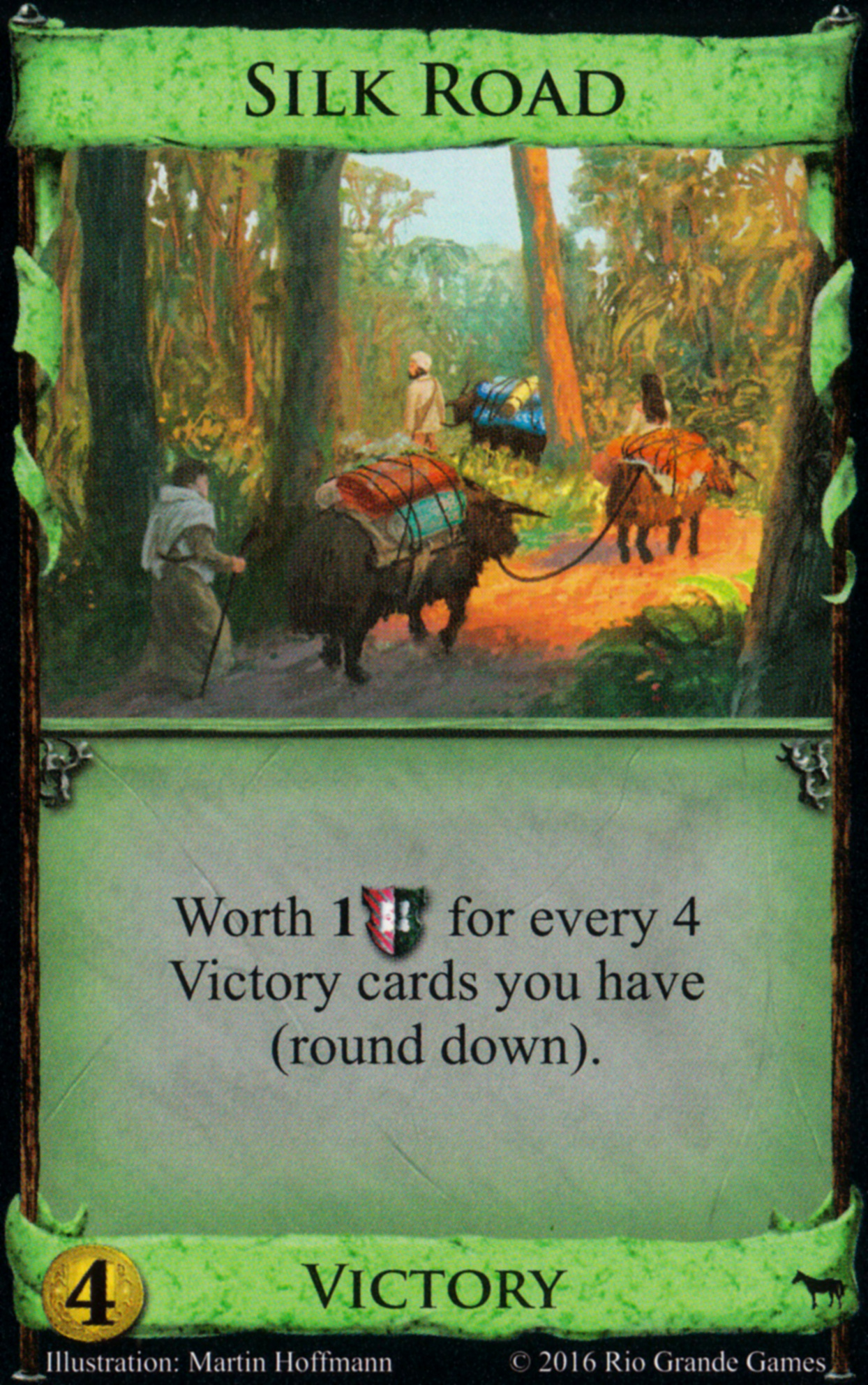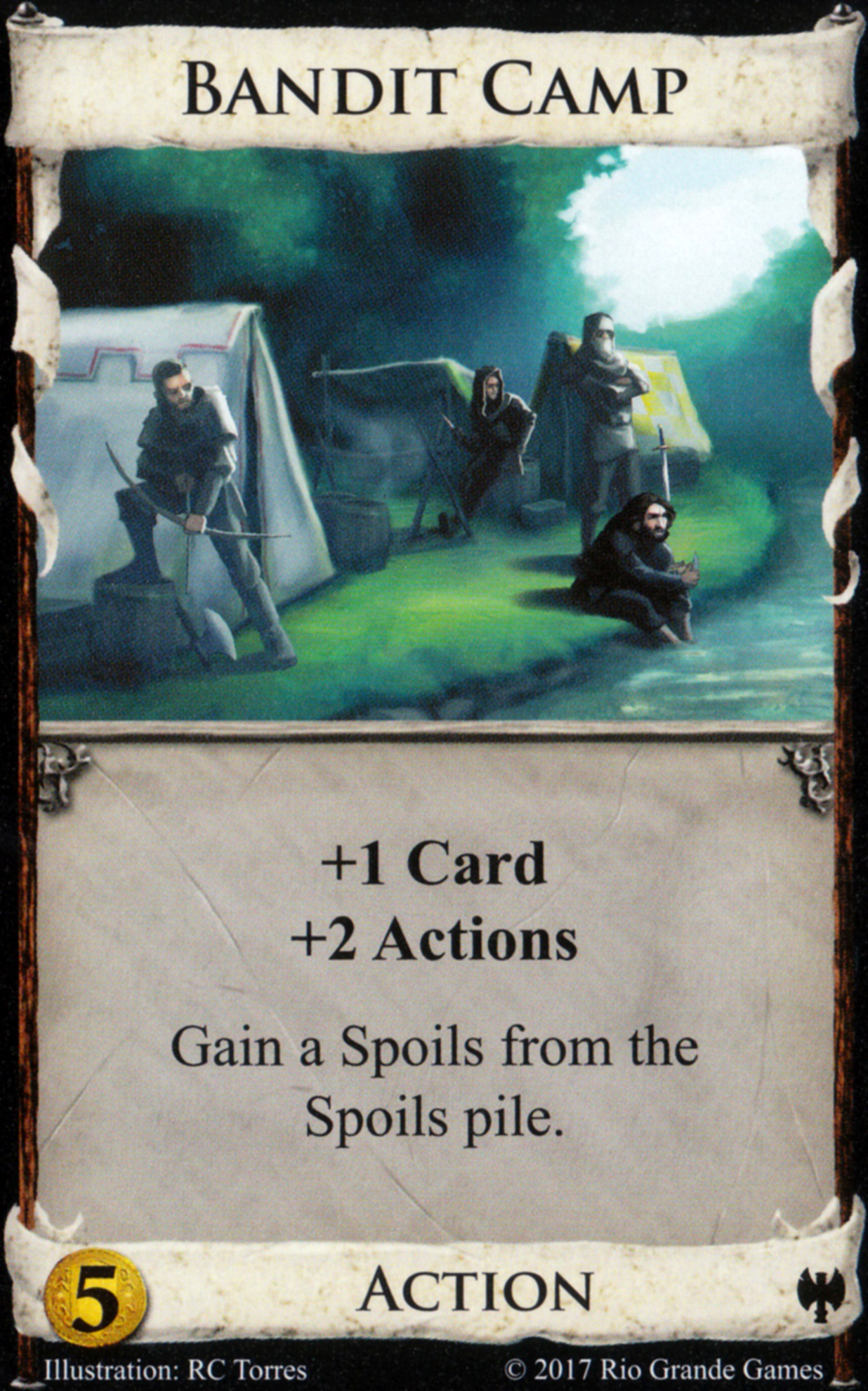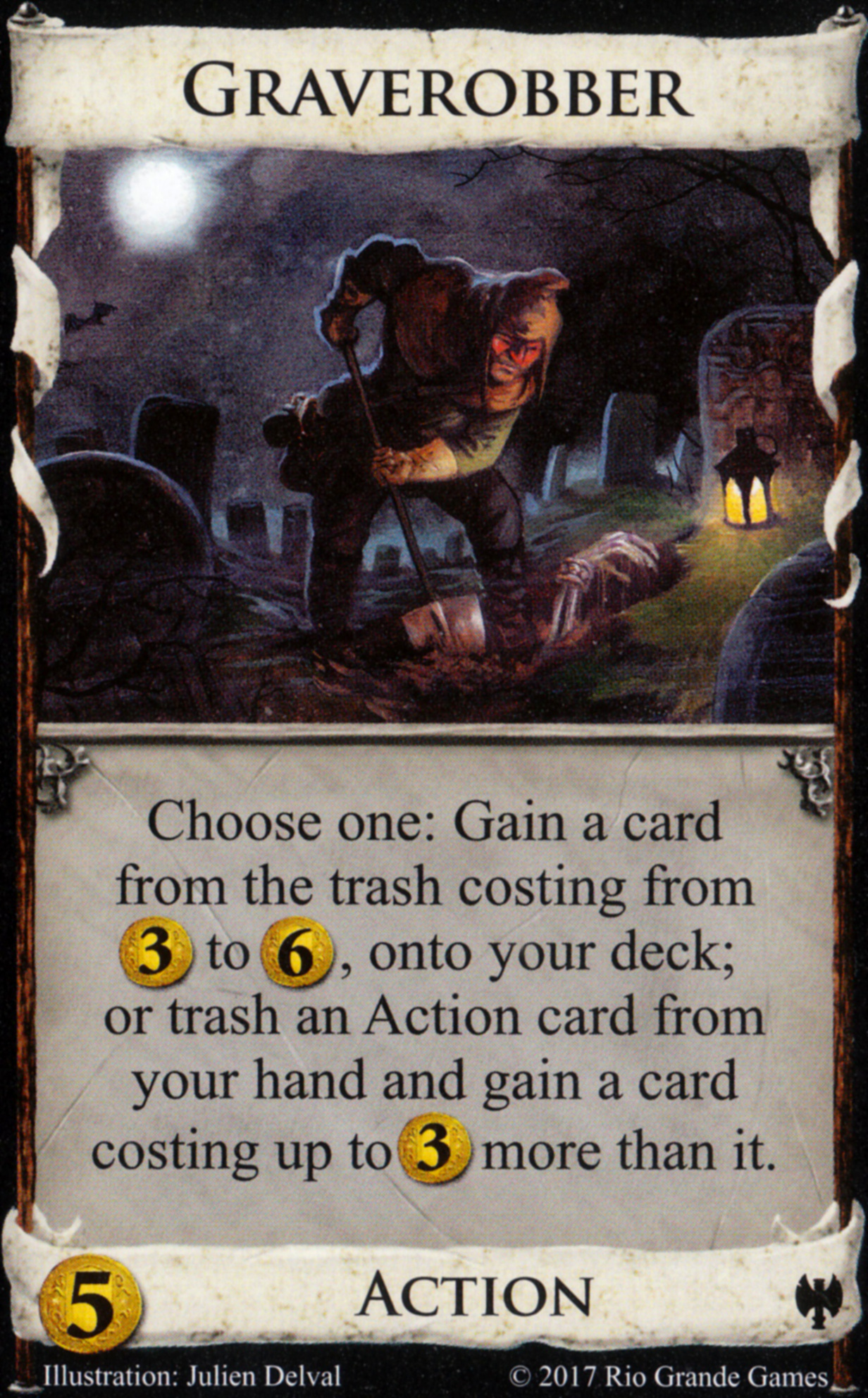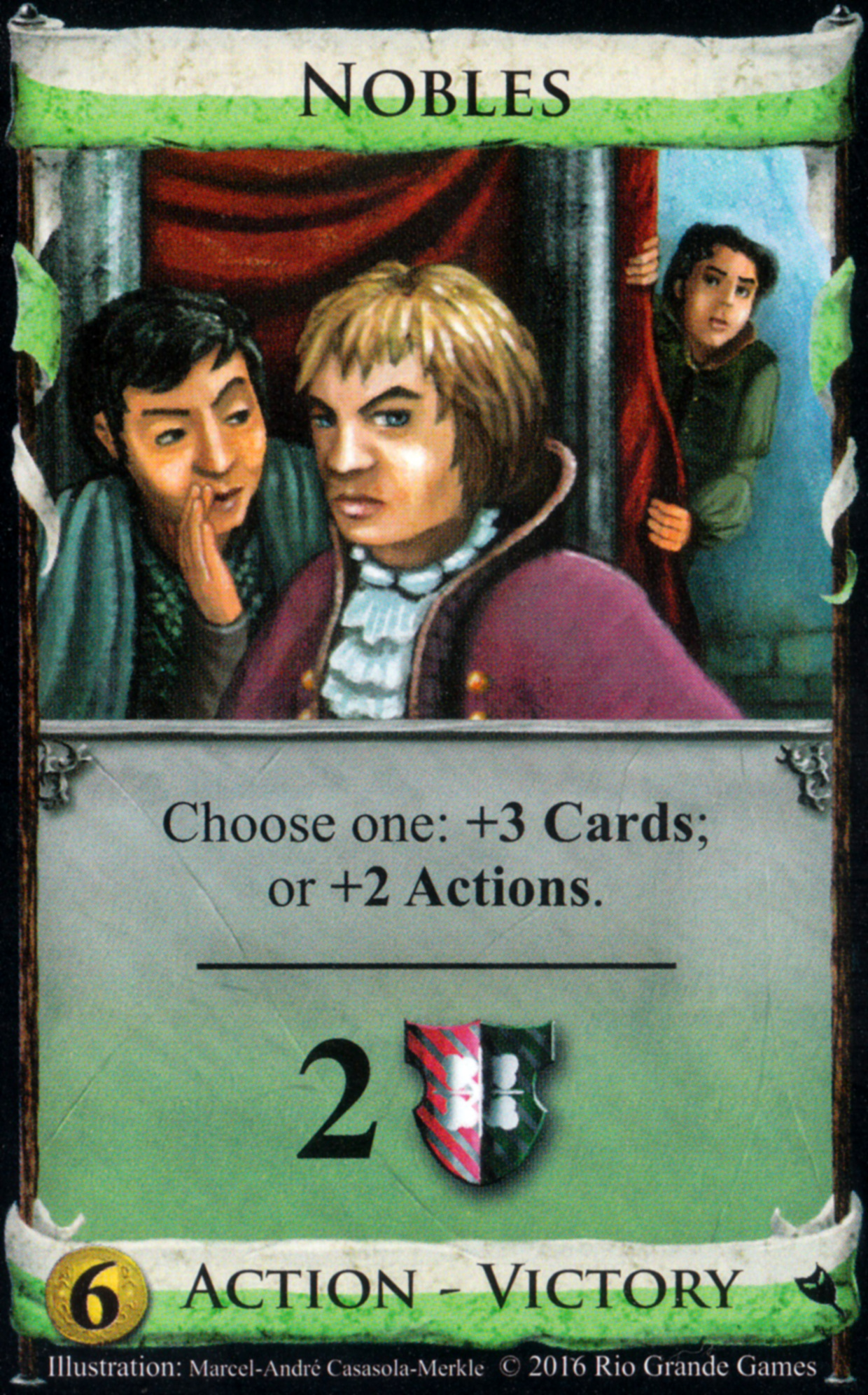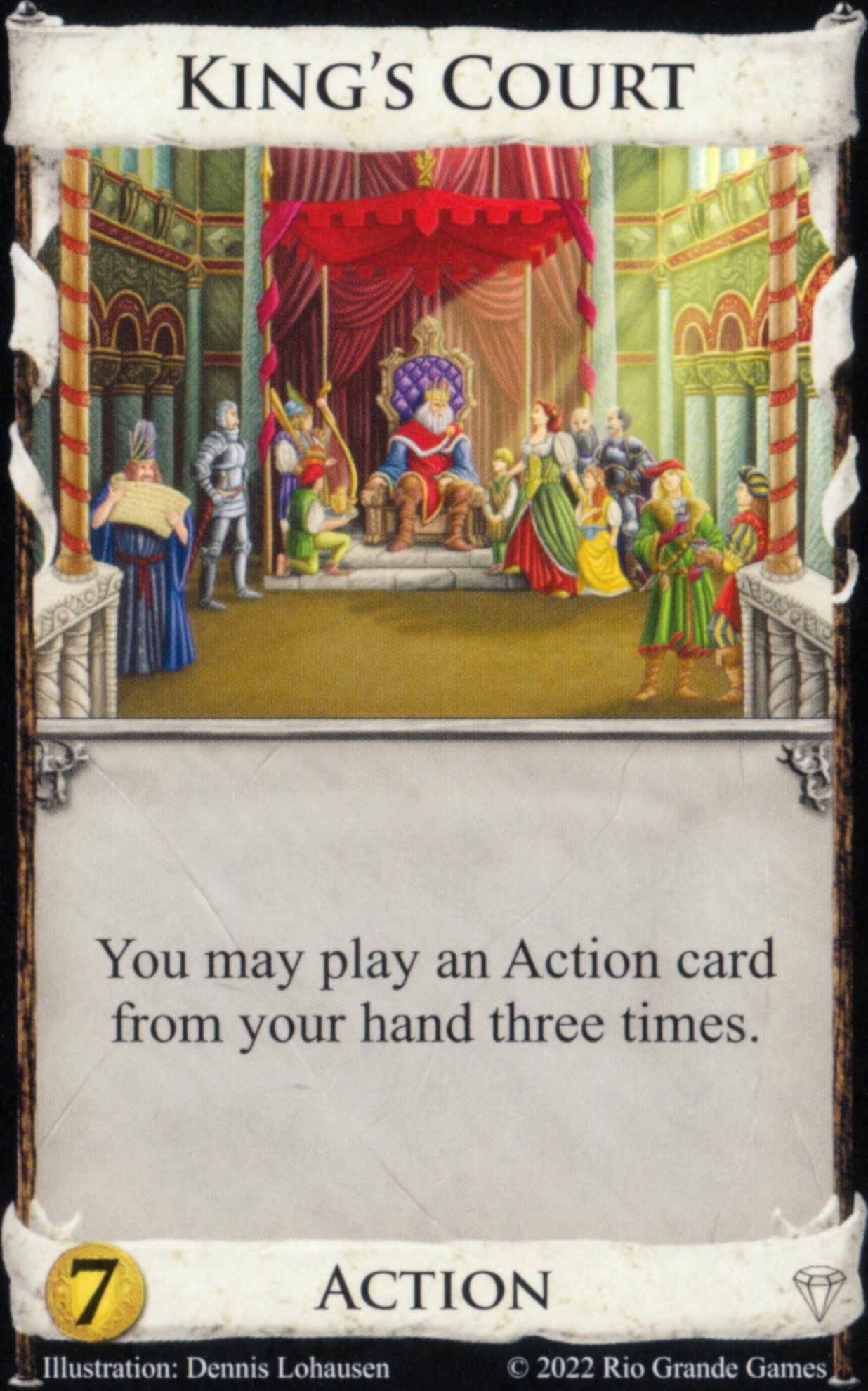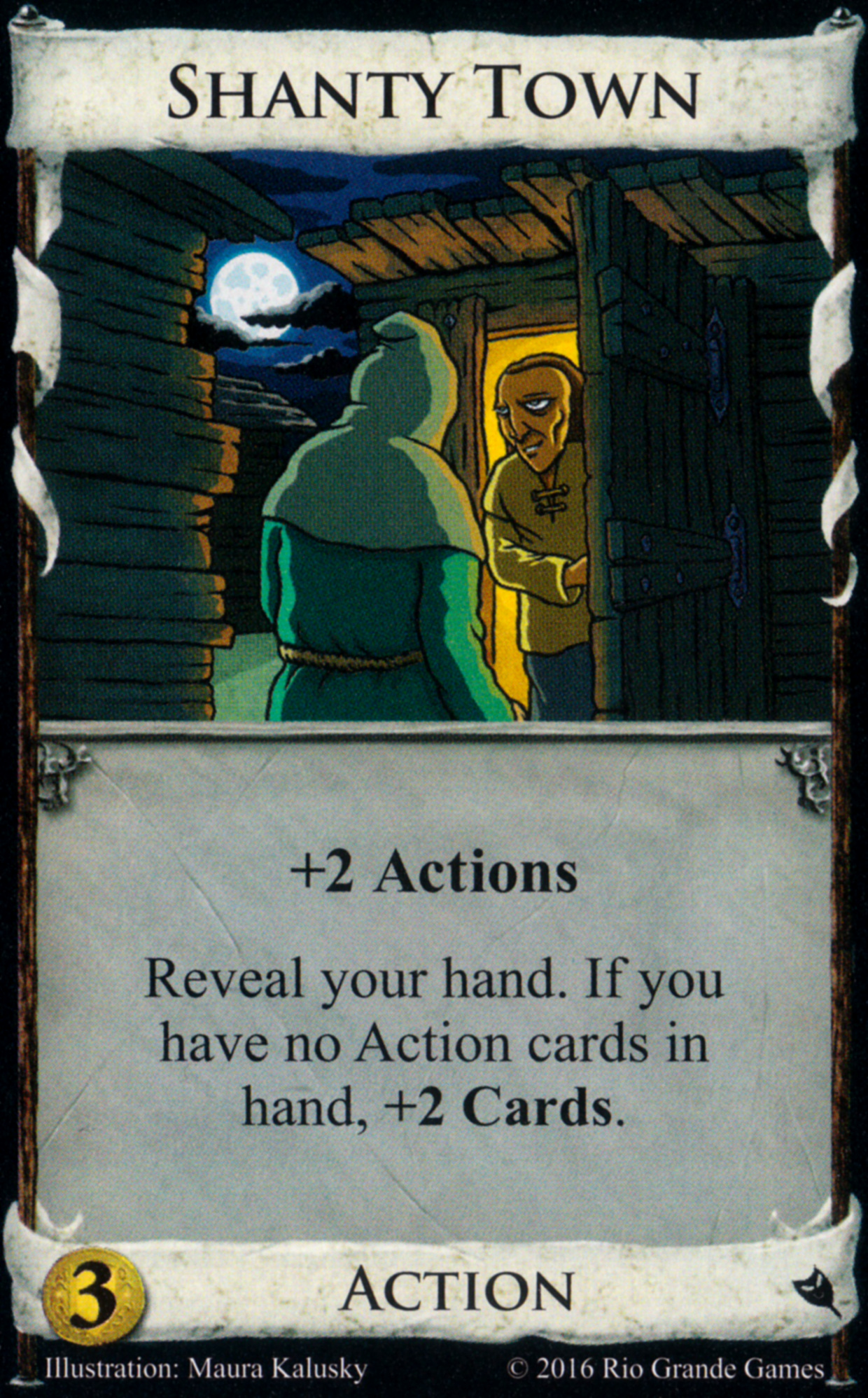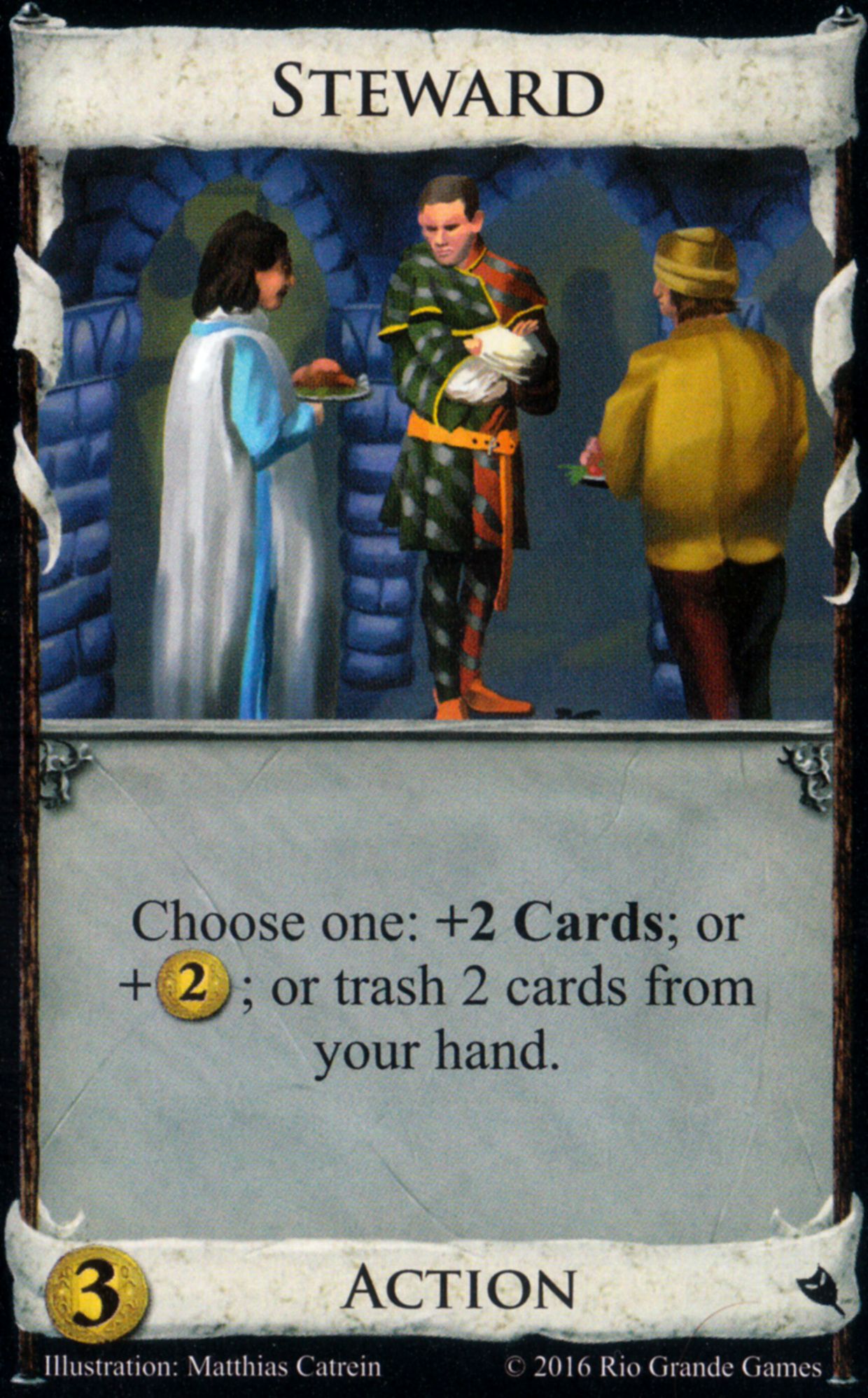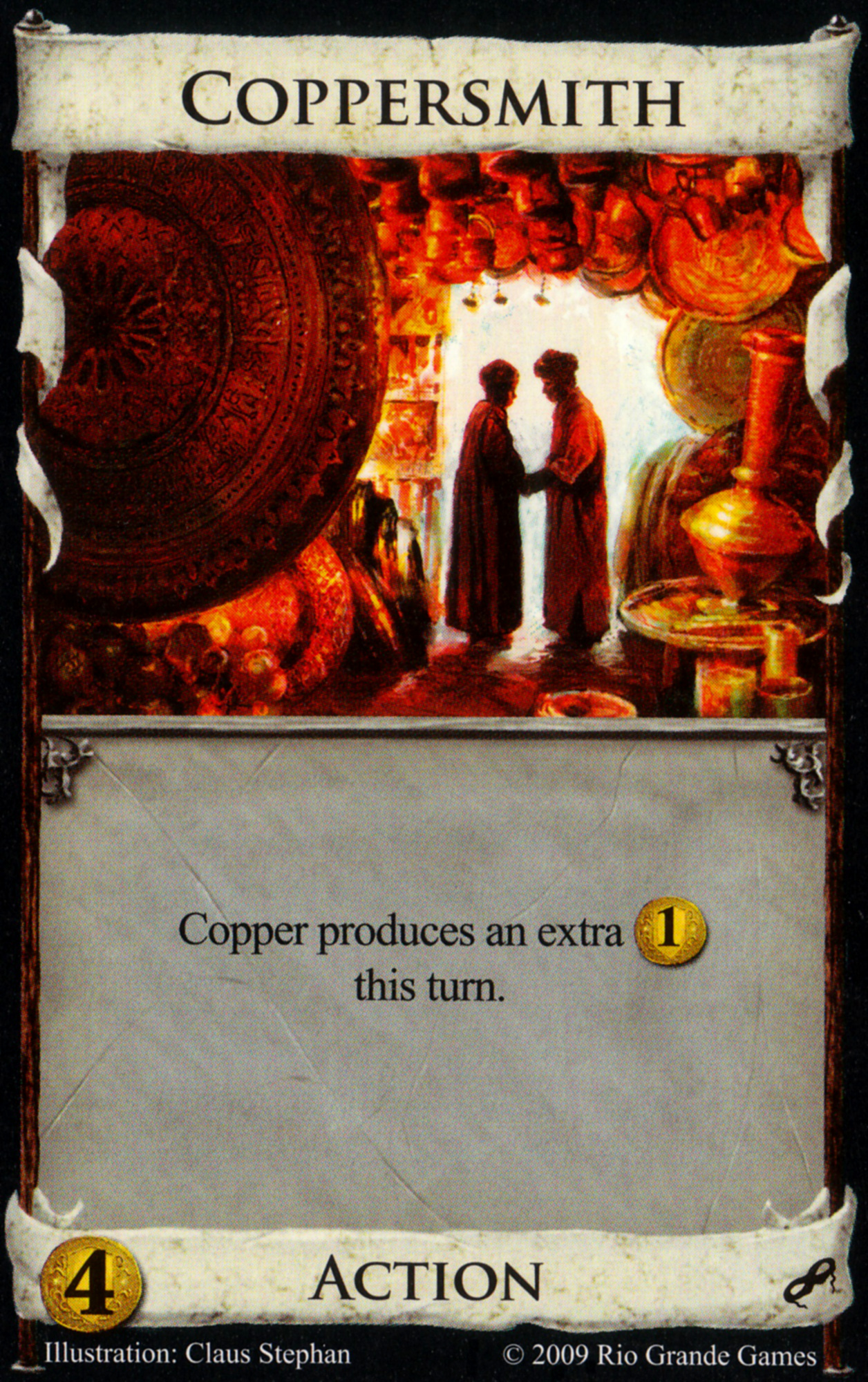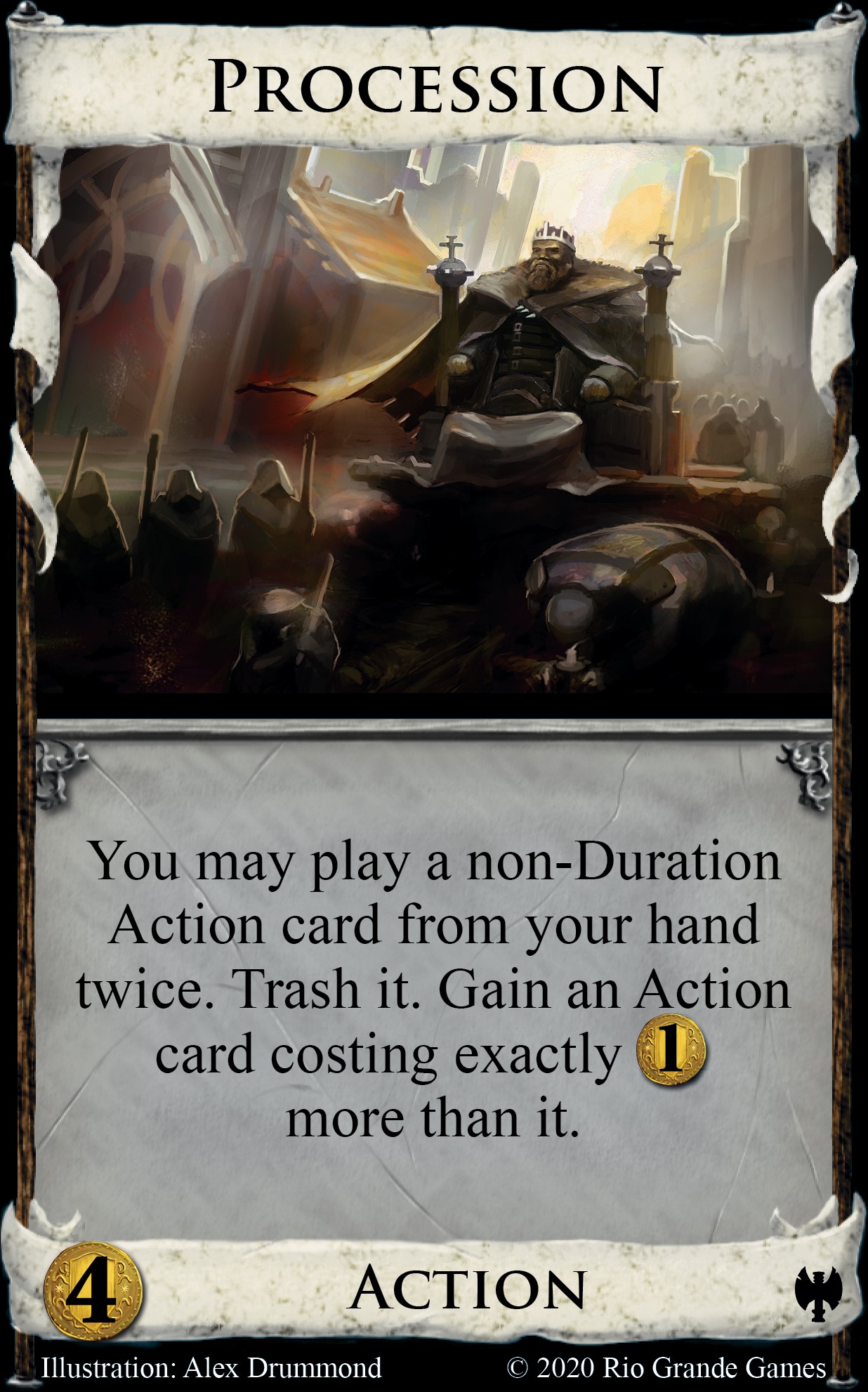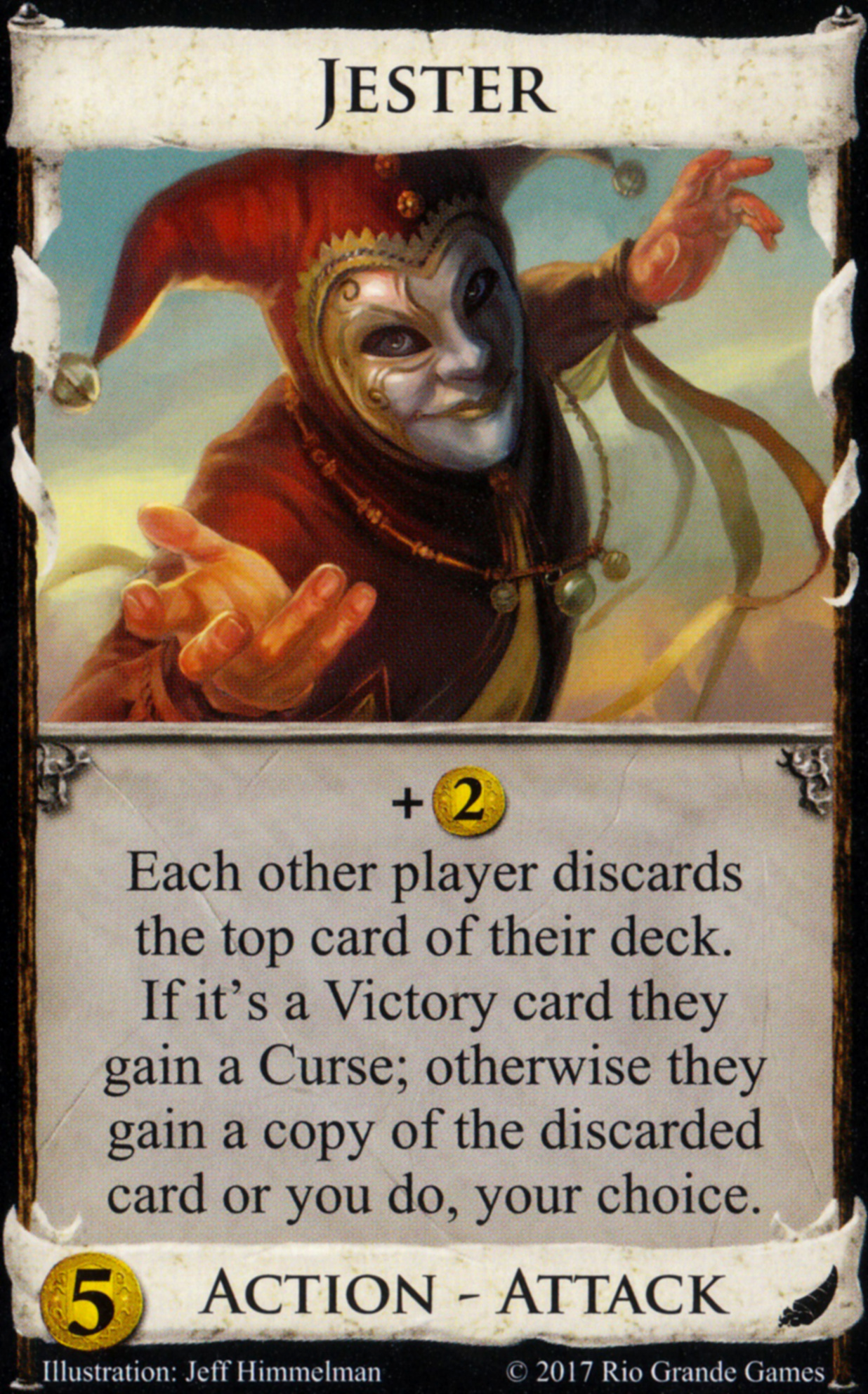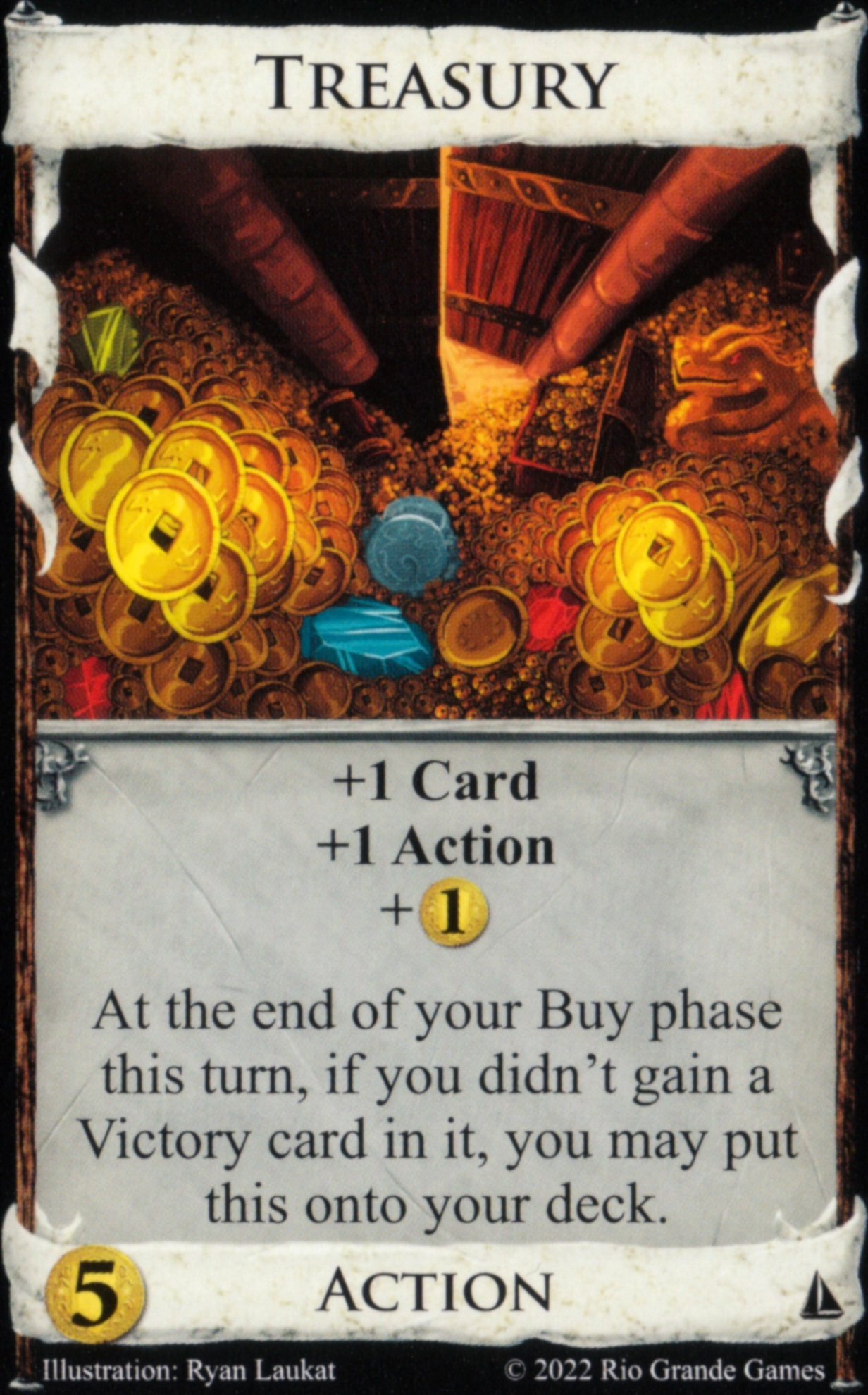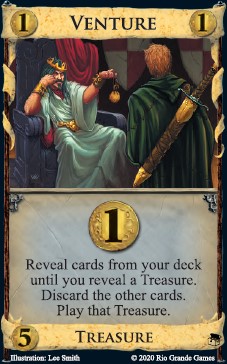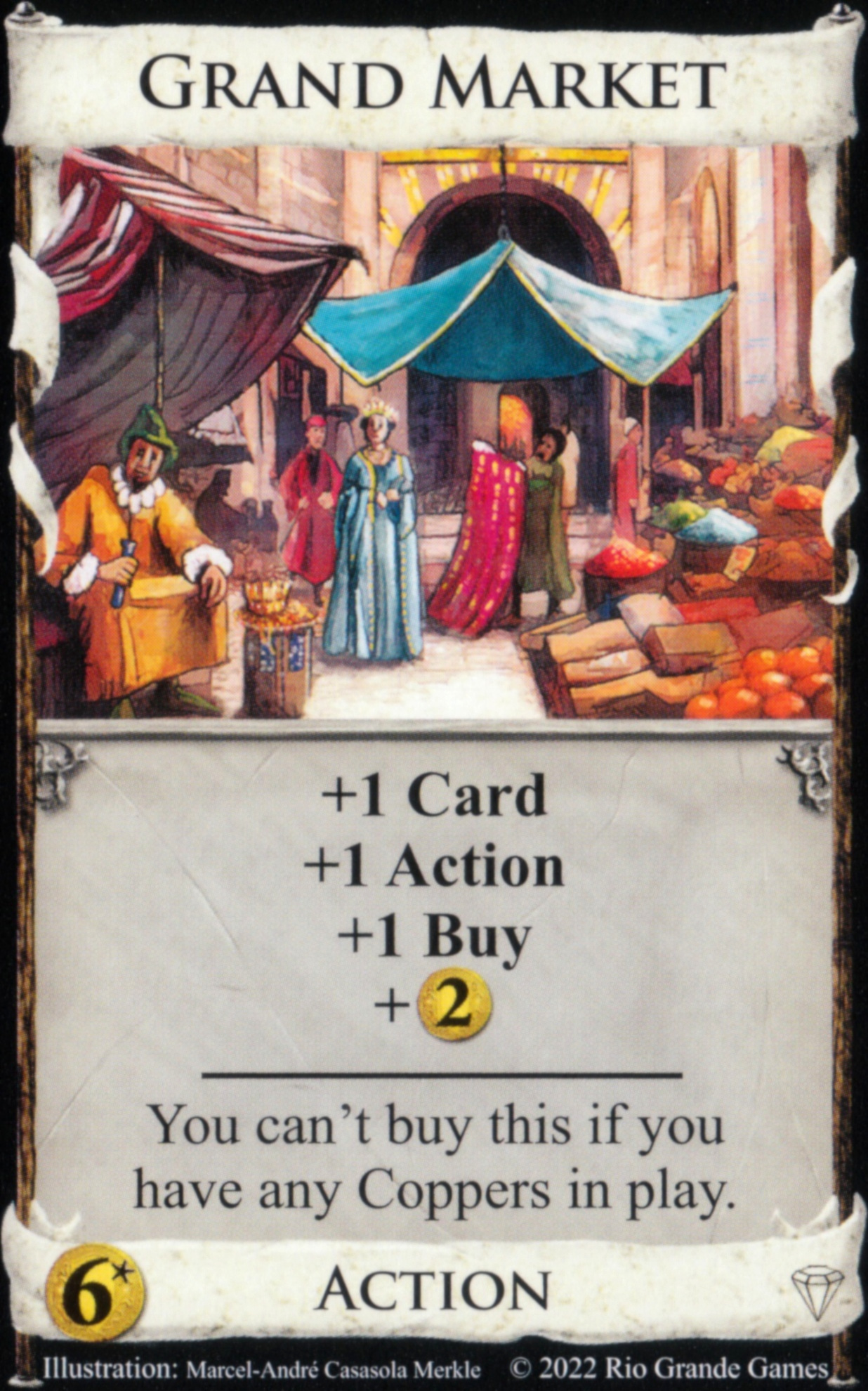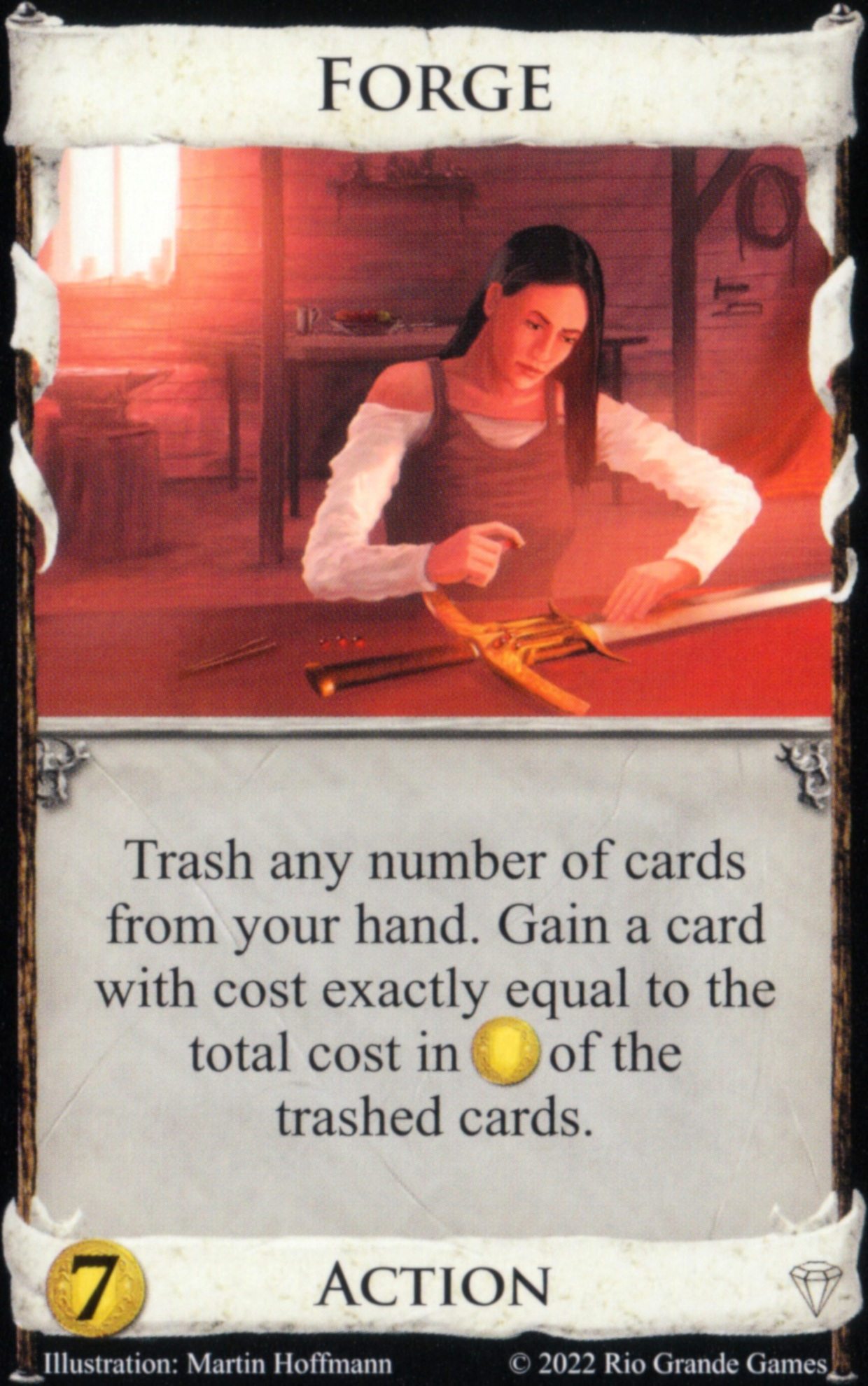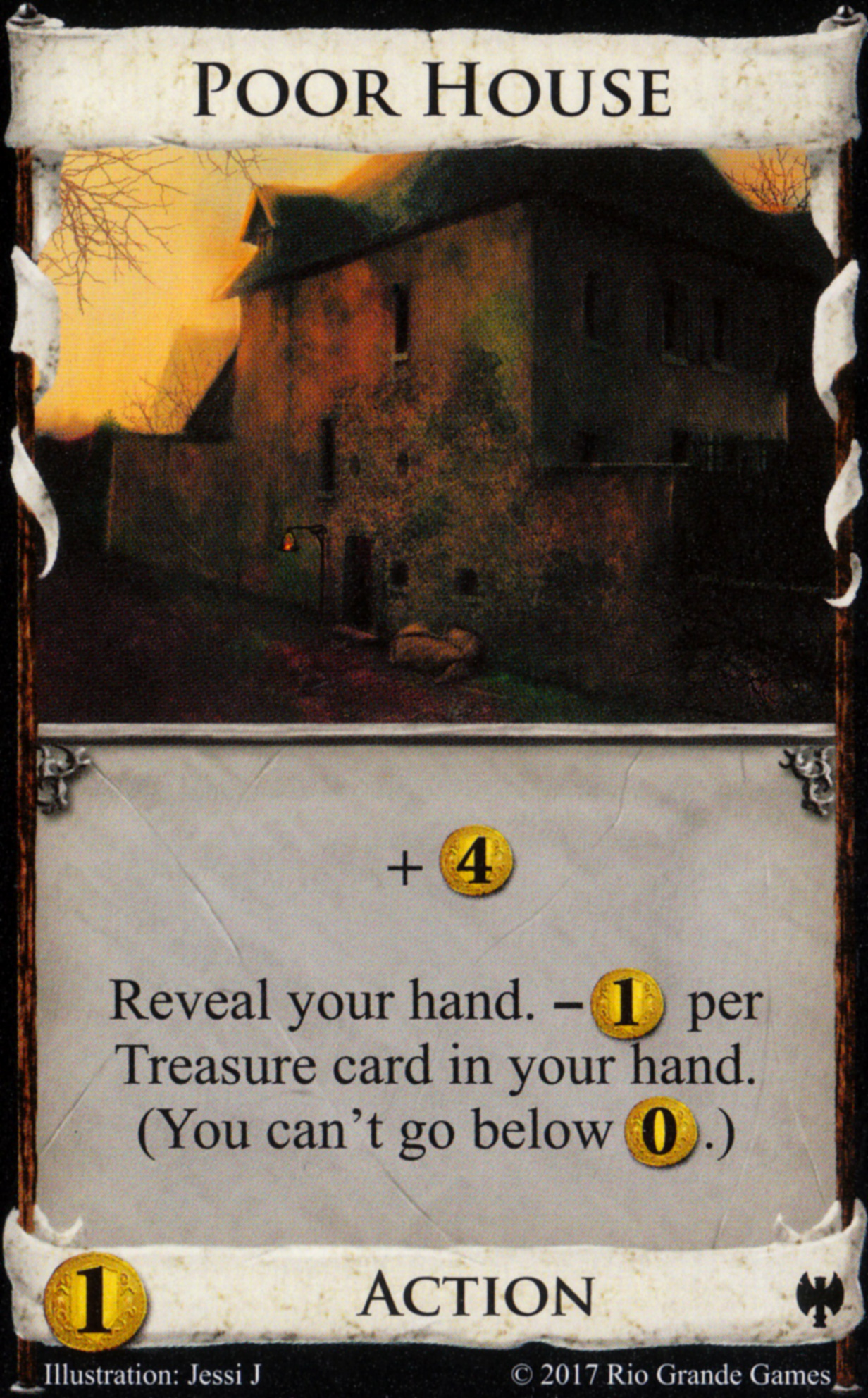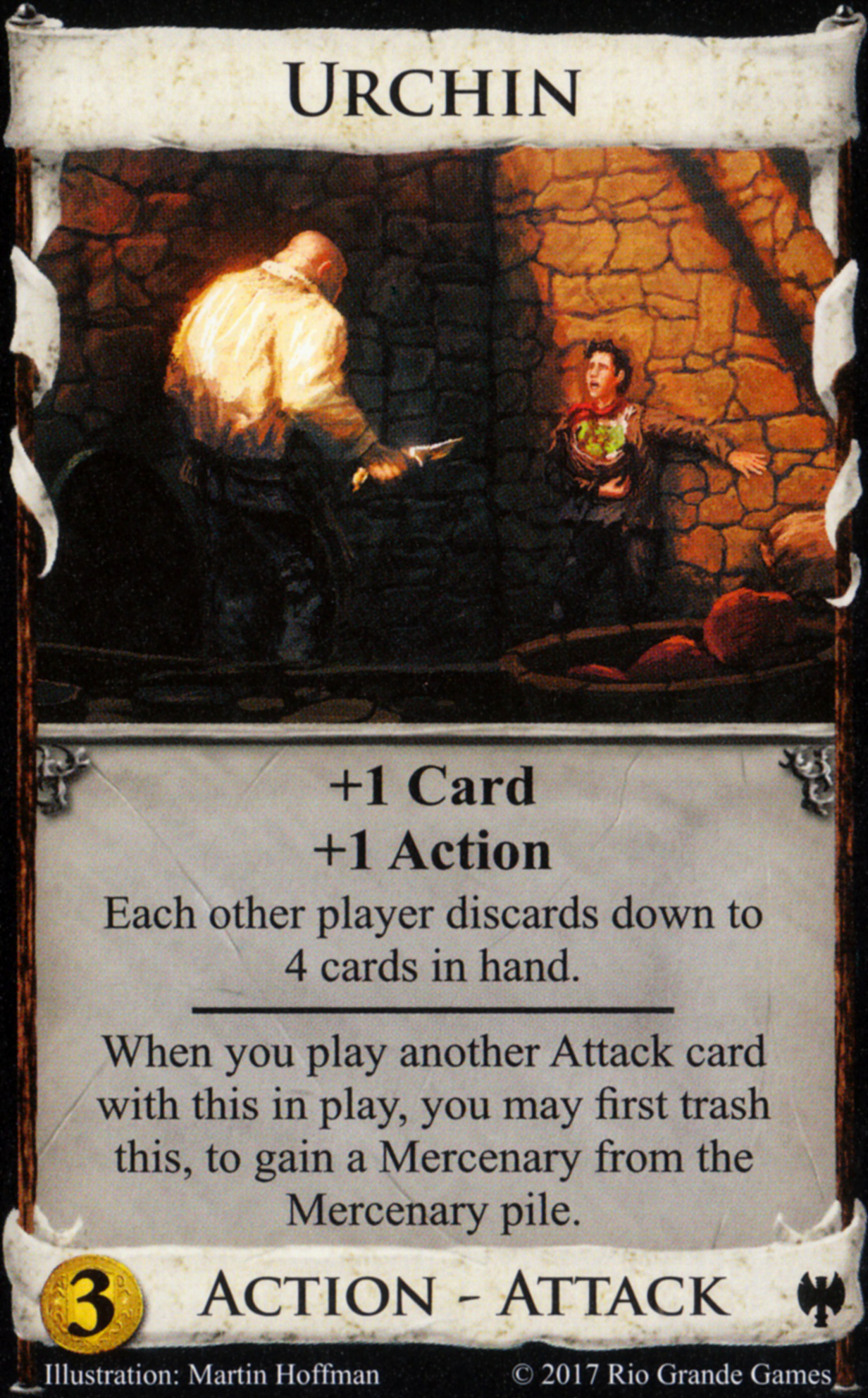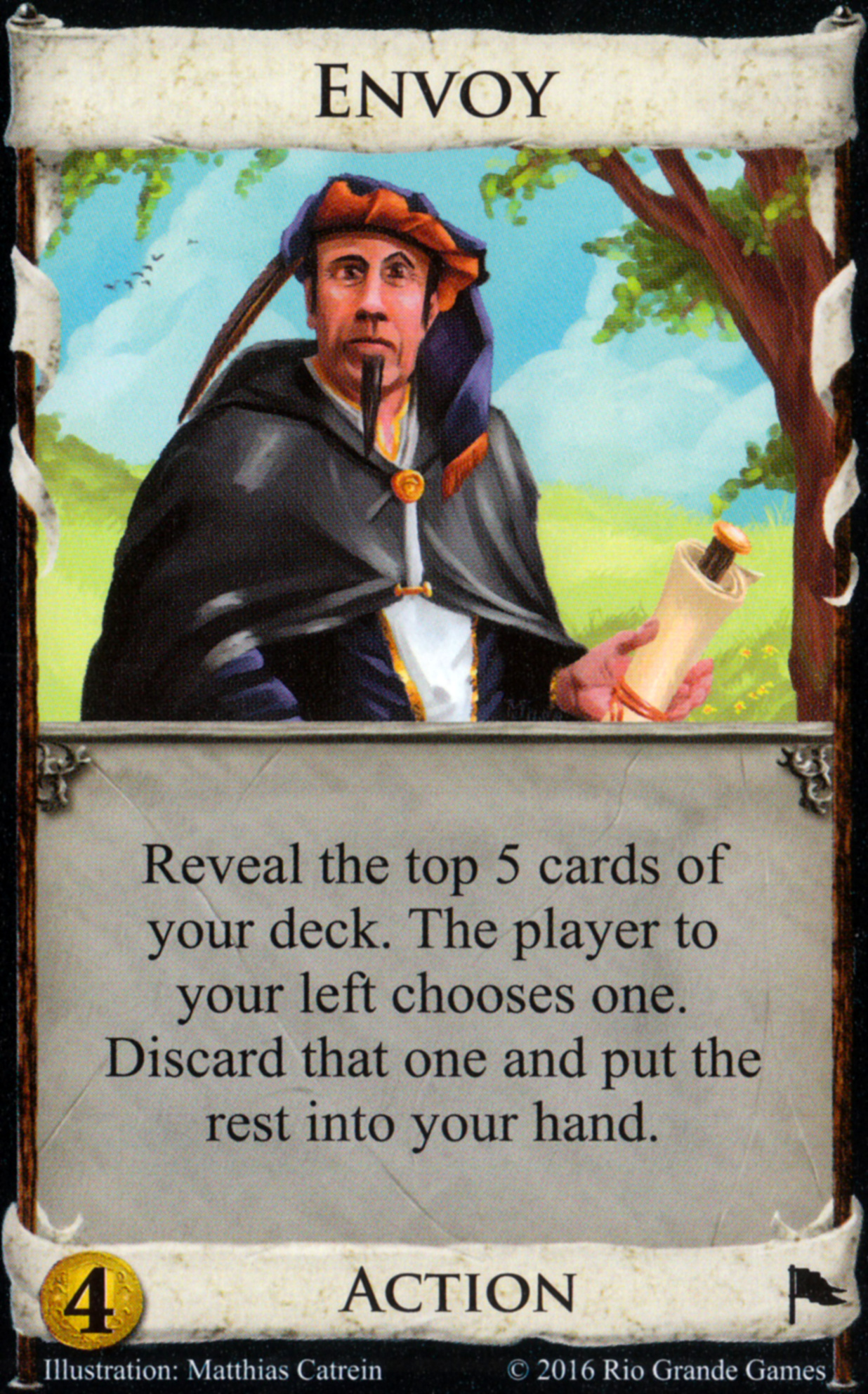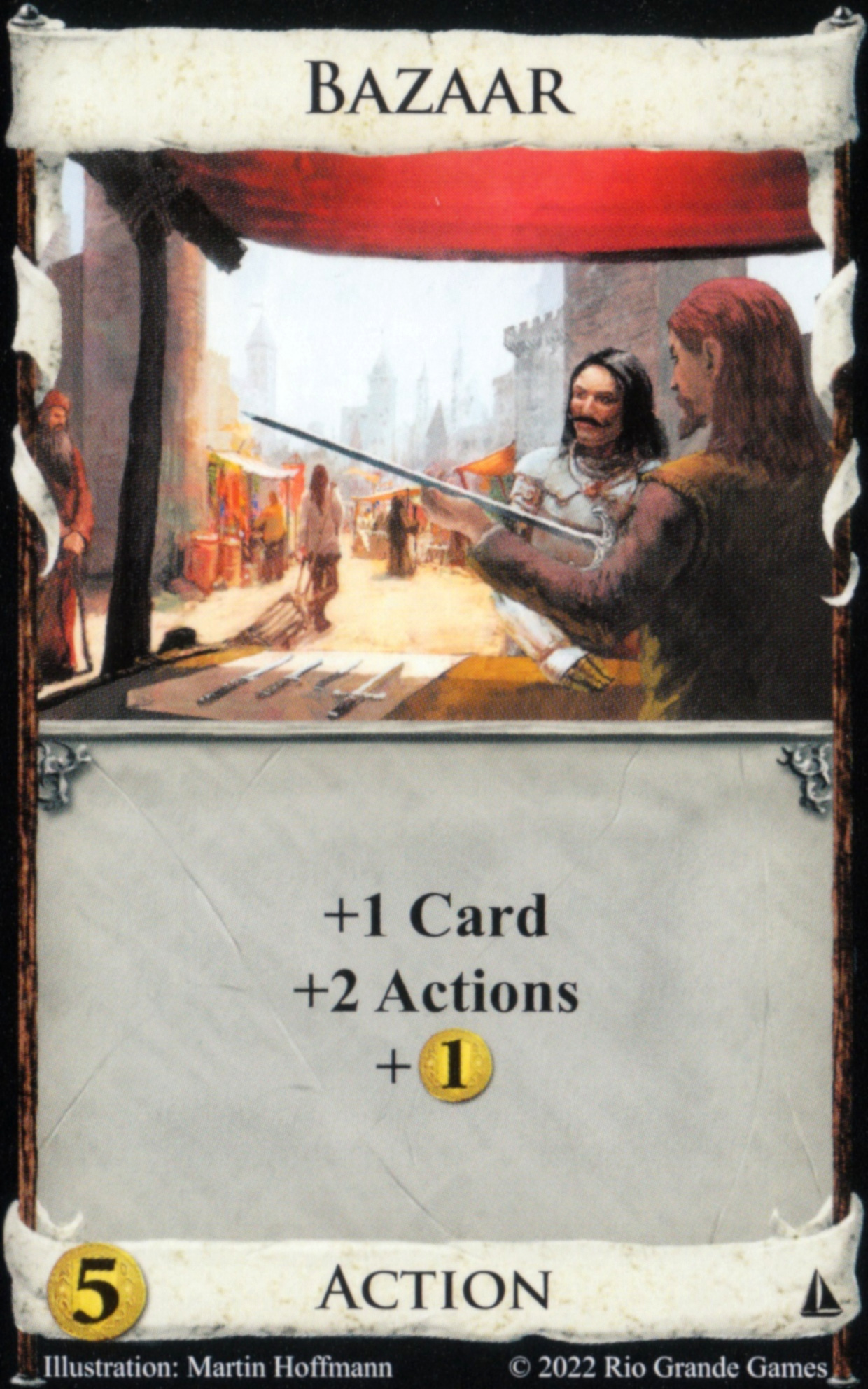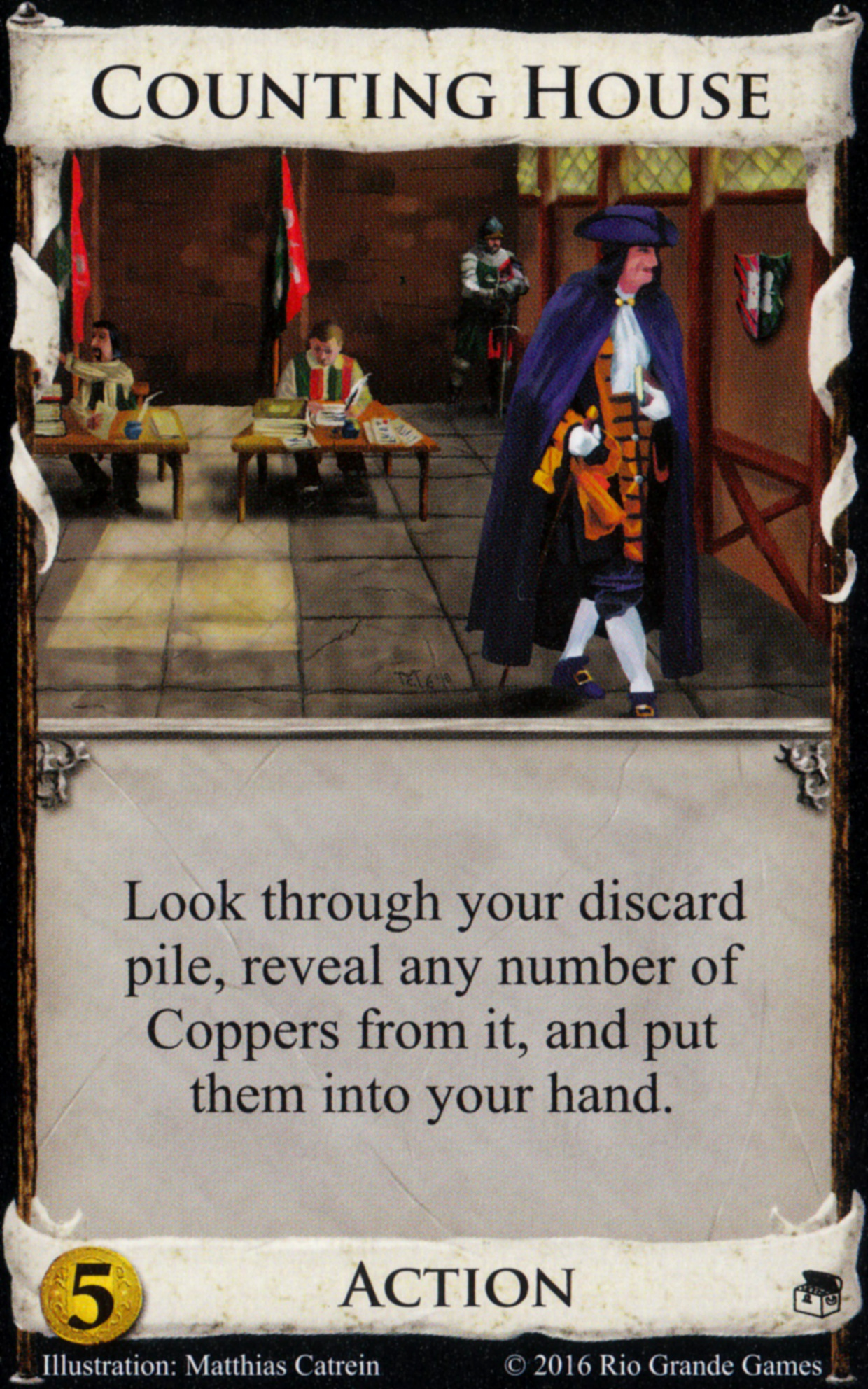All credit to
Wandering Winder's blog.
Gardens: An Introduction and Dominion TheoryAh, Gardens. For a long time, you were my favorite card.
At some point, I determined to not lose to this card - which is probably how I got the itch for all the alternate VP that came later. It's true, though, that mastery over it is not a simple thing. I have learned an awful lot, and I think there's still a chunk out there that I have yet to bite off. But let's dive in.
Running in head-longThe most naive strategy in "going for Gardens" is to just buy as many as possible as soon as possible. People don't stay on that for very long, because it doesn't take much to figure out that your deck gets so bad, you actually have to build more to be able to afford all the Gardens. But it's not too uncommon to see players who do only a few turns of preparation before starting their charge into Gardens, buying every card possible as soon as possible (i.e. maximally jamming coppers into their decks), and trying to get lots of Gardens and lots of cards more or less ASAP. Let's take a look at a couple of examples to demonstrate this kind of approach.
Candlestick MakerI have recently seen it floating around that Candlestick Maker is one of the better "Gardens enablers", with the implication that a headlong strategy here could make real strides. The idea was to end the game around turn 17, by which point it was supposed to be not uncommon to have 6 point Gardens. Memories can apparently be faulty: In order to get to 6 point Gardens, you need to add 50 cards to your starting deck. Turn 17 means 17 natural buys, which means you need 33 additional buys from CSMs. Work out the example yourself, and you'll see that even if you stack your deck, you can't get that many - indeed, you max out at 55 if my memory serves right. However, having a best-case-scenario mentality isn't very useful anyway, so what I'm going to do here is look more at an average case. Examples like the following can show the power of theory-crafting in planning out many kinds of strategies, broadly.
Turns 1-2 you are buying CSM. Turns 3-4 you are getting, most likely 3 more. How did I come up with 3? Well, the maximum possible is 4, but to get that, you need a CSM turn 3 with at least $4, another one turn 4 with at least $4. And you can float a token, potentially. However your deck is only capable of producing $9, and 2 cards miss the shuffle. If either of those is a CSM, you're done. If they're both coppers, you once again can't get there. If both CSMs fall in the same turn, you're once again hung out to dry. There are a lot of fail cases, and indeed it's not crazy unlucky to only get 2 more (though it is fairly unlucky). So 3 is a reasonable guess. Then turns 5,6,7 will be a single shuffle, in which you are pretty likely to get the remaining 5 CSMs. At this point, you are likely to have played CSM about 6 times. Assuming you're using all your spare buys for coppers, this means you're looking at somewhere around a 23 card deck. That means you're looking at a 4 turn shuffle next, and 1-2 CSMs, on average, missing that shuffle, with it being more likely for more to miss if you have been luckier earlier and have more cards now. 4 natural buys plus 9 CSM buys gets you 13 more cards, taking you after turn 11 to around a 36 card deck. This gives you a 7 turn shuffle, in which 0-1 CSMs will miss, most likely. Thus, after turn 18, you're looking at 53 cards.
Here is where we need to start looking at what exactly we're buying on these turns. Surely lots of the buys are heading to coppers. But we're also obviously going to want to buy actual things, too. And especially with the coin tokens to smooth us out, we don't want to waste any of the 'real' money we are producing. If we're playing this headlong rush, that means we will be buying Gardens. If we go back to the point at which we're anticipating the CSMs running out, at the end of a shuffle on turn 7, we see a 23 card deck with 3 Estates, 10 CSMs, and 10 Coppers. The money density of this deck is 20/23 or about 4.35 per hand. We can also anticipate having 1-2 tokens left when we enter this stage. Given that, it seems very likely that we'll be able to buy Gardens on each of these 4 turns, along with our 9 coppers. We're likely to pick up another couple tokens as well. This means that at the start of the shuffle on turn 12, our money density will be 29/36, which is a hair over 4 per turn. Thus, we can still Gardens-per-turn for the next 4. Following this, though, we're dropping off a bit, so by the time we go for Estates, we won't be able to double consistently. Overall, then, we're looking at 20-21 turns to be able to empty our 3 piles. If we look back, this is most likely going to leave us just shy of hitting 60 cards (which would take 1-2 additional turns, average case).
So what we end up with is: 20-21 turns to empty piles and end the game, 8 5-point Gardens, and 11 Estates, for a total of 51 points. This equals the number of points from a player who is able to empty all the Provinces without trashing their Estates or touching Duchies. Of course, the problem is that this simply isn't good enough. I'm not sure if this is even good enough to be straight-up Big Money. Probably yes, but only barely. Of course, they are almost always going to have some improvement on straight money, so you'd better have an improvement on straight CSM/Gardens if this is what you want to do.
WorkshopWorkshop plays out in some ways very similarly to CSM. Gain a bunch of them, buy out of the Gardens, empty the Estates. It's the most classic rush strategy in the game. In this case, we are even Workshopping the Workshops (which is not great if you're contested, but as I often say, you want to consider non-mirrors when picking strategy, and only consider mirrors when implementing). Of course, Workshop is also terminal, which means you are going to be a little bit slower to empty them, but also means you want to stop 'shopping 'shops a bit before you actually empty them (buying the last 1 or 2 when you have exactly $3, or if it gets late enough, gaining them later on). The terminal-ness of the Workshop is a pretty big downside in comparison, but this is more than compensated for by the increased economic upside. When I gain Gardens, Workshop made $4. Even when I gain Workshop, it made $3, and $2 for Estate is still better than the $1 from a CSM. Of course, collisions happen, and without tokens, you probably aren't going to be able to use all of your $$ efficiently, providing some waste. This means you won't see the full benefit of the $4 economic potential.
Still, the games will start out playing more or less the same. Then, because you're worried about collision, you start gaining Gardens a turn or two faster. The key point is that throughout the period you are gaining Gardens, you're also buying other cards which actually help you end the game (mostly Estates), as opposed to just picking up coppers. 7 turns before you start greening, into about 9 turns of gaining Gardens+Estate, plus an extra turn to finish off stragglers means you are going to be finishing somewhere around turn 7. Of course, you're going to have gained way fewer cards in that time-span - we're looking at barely 4 point Gardens as opposed to almost 6 - but the increase in speed is a big deal. 43 points is enough to outlast 6 Provinces, which in all honesty is still not all that special, but it's quite a lot better.
Some Fundamental ConceptsThere are two main approaches you can take with this kind of head-first charge for Gardens. One is to try to rush down and end the game. This is great if you can actually end things fast enough, but most often, that's just not going to be possible (the major exception, of course, is the card Ironworks). The other is to try to score incredibly large numbers of points. This also tends to not be great most of the time (Beggar is, once again, a very large exception).
Does that mean that the card isn't good? No, not at all. Does it mean it's doomed to be merely an alternative to Duchy as a means for getting a few extra points at the end of a game? Sometimes, but not always. It can still be the star of the show. How? Well, headlong rushes can still happen sometimes with multiple enablers. More to the point, if you build just long enough to be getting 1-2 Provinces and THEN dive for the Gardens, things can turn out well. But most often there are one of two strategies with which this card can get you there:
Aggro PileIf you haven't checked it out, I might suggest my previous blog post to familiarize yourself with what this deck is all about. But how Gardens comes in is, if you add some kind of attack, particularly a junker, to the Headlong rush mix, then suddenly you are in business. You're emptying piles slower, but only slightly slower. More importantly, you are slowing your opponent down quite a lot, and while you certainly aren't shrugging the junk off yourself, it doesn't hurt you nearly as badly. This thus gives you enough time to finish up piling out without getting horribly outscored by an opponent going after the big cards.
EngineI know, it might seem crazy. But in all honesty, engines tend to be the ways to maximize Gardens. Engines love Gardens. After I made that determination to not lose to Gardens, the way I most often did was when I went head-long, and my opponent opened Chapel... and then went for Gardens.
The thing to understand here is that engines are better suited to gain more cards over the long term than virtually any other deck. Once you get a running engine, it's very common to be gaining 3,4,5, even more cards every turn, as you add a little bit of payload and maintain your draw apparatus. Going straight for enablers doesn't permit that, and over a time-span of almost any length (look at the CSM as an example), you really aren't going to be doing better than 2 cards per turn that way. The fundamental problem is that as your deck gets bigger, your shuffles get longer, and you see your enabling cards less often. In contrast, as engines get bigger, they continue to see every enabling card nearly every turn - so even though they have fewer overall, they see them much more often.
Because of this, Engine decks routinely end up to be nearly the size of your more 'traditional' Gardens decks, and especially with the help of wasting a bunch of extra final-turn buys, they can often actually end up largely, sometimes by quite a substantial margin. Chapel-ing away ten cards is insignificant against an extra card or three per turn across the remainder of the game.
As an example of this, I would like to point to
this game. Of course, this isn't a comparison to a head-long rush - my opponent didn't go for Gardens, and indeed this would have been a clobbering regardless. But the point is that, in 13 turns, I was able to gain 8 Gardens and have them all be worth 5 points, and you don't do that by rushing them, you do it by building an engine. The reason why this is so powerful in an engine is that it gives you a lot of flexibility, because it's a massive well of points which you can 'float'. If your opponent goes straight for Gardens, you clean up by just taking down all the Provinces. If, though, they go for Provinces, then you have a massive reserve of points waiting for you in the form of Gardens, which means you don't really need to worry about losing a Province split by any margin other than 8-0.
Of course, there's a lot more to the card than this, but I hope this introduction has been helpful.

